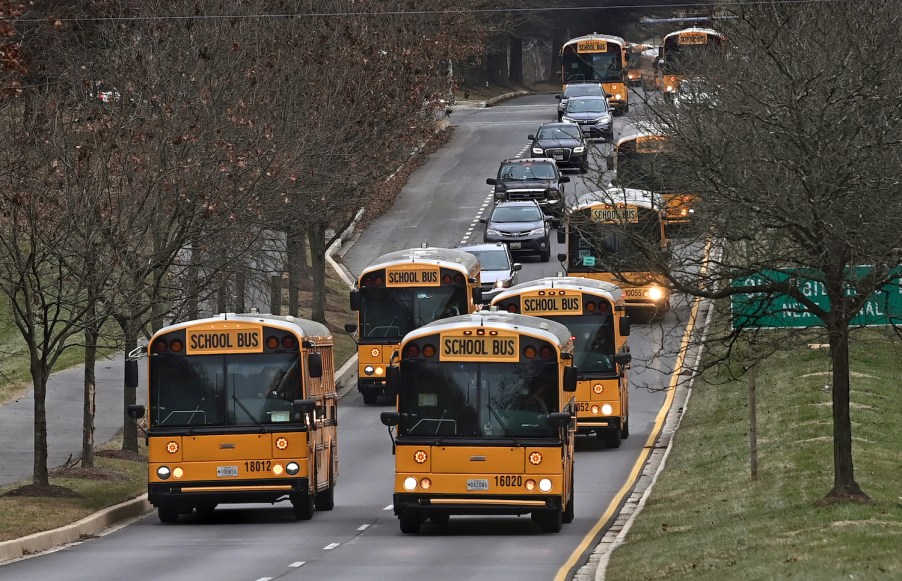
Why Are School Buses Yellow?
Once, you might see a school bus in any number of colors. But at a 1939 conference, all the states and bus manufacturers defied lobbying to paint the school buses red, white, and blue and agreed instead on the shade of yellow still in use today. The team trusted their gut to settle the specific shade, but still managed to pick one of the most noticeable colors in existence—according to modern science.
What’s the history behind school bus yellow?
In 1939, stakeholders at all levels of school transportation gathered to standardize school buses. Some schools had already been using yellow buses, but at that meeting they agreed on National School Bus Chrome—also called Color 13432—and an icon was born.

The man behind the standardization of school buses was a retired teacher and superintendent named Frank Cyr. Cyr was born in rural Nebraska, growing up in a sod house before going to college and becoming a teacher. By the late 30s he had been a superintendent and seen the effects of the abysmal school transportation rural students suffered through. Some students were still traveling to school in school-provided horse drawn wagons.
The General Education Board gave Cyr $5,000 to travel around and study different school transport systems. Then he hosted a conference at Columbia University and invited stakeholders at all levels of school transportation. This included members of school administrations, the federal government, and automakers. His goal was to standardize the capabilities, dimensions, and safety features of school buses. But they also had an agenda item to choose a color.
Cyr told the Smithsonian Magazine that some folks wanted to pain all the country’s buses red, white, and blue. Cyr explained that in that era, “Red, white and blue was camouflage, if you think about it. It was to make kids patriotic.” Cyr didn’t vote for the patriotic color scheme. Why? He said, “It was well-meaning, but they made the buses less visible. And I don’t think it really had much effect on patriotism.”
What’s so special about ‘National School Bus Glossy Yellow?’
Modern technology has revealed that the shade of yellow chosen for school buses at a 1939 conference happens to be one of the most visible colors in the world. The United States’ recognizable school buses increase safety and have become an icon.

The first generation of standardized school buses owed their unique color to lead-chromate yellow mixed into their paint. For this reason, the color was named National School Bus Chrome. When the chemicals that gave it its color changed to safer, non-lead ones, the government renamed it National School Bus Glossy Yellow.
The reason School Bus Glossy Yellow is so visible is that it stimulates the equal numbers of red and green photoreceptors. This means that this “middle-of-the-road” color it registers on as many photo receptors as possible. Other shades of yellow do not have the same properties. Cyr and his colleagues may have intuitively known that this shade of yellow was especially attention grabbing, but did not yet have access to any of the science surrounding it.
Do schools have to paint their buses yellow?
There is actually no federal law dictating school bus color. Governments at the state and even the local level get to choose the color of their own buses if they so choose. But the NHTSA strongly recommends schools paint their buses National School Bus Glossy Yellow because of its track record for safety.

Because school bus manufacturers were involved in choosing school bus yellow during the 1939 conference, they continue to paint most of their buses that color. So even though a state could change the color of its school buses, it’s unlikely that any state would bother.
Next find out why some truck tires don’t touch the ground.



